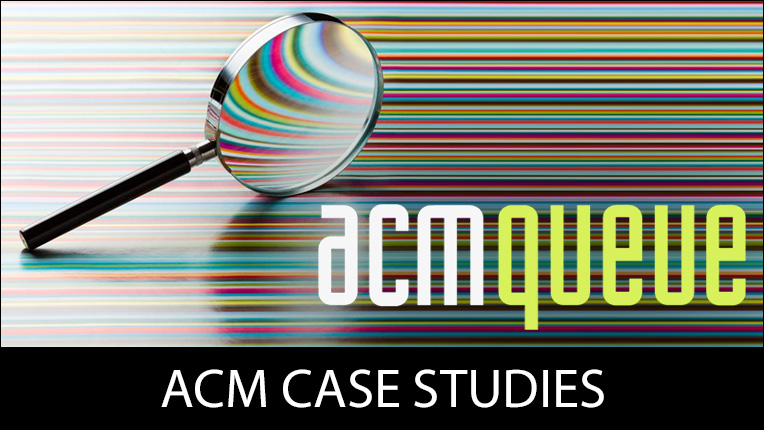ACM Inappropriate Content Policy Frequently Asked Questions
What is considered inappropriate content in ACM Publications?
While acknowledging the subjective nature of what constitutes indecency, obscenity, or bad taste, ACM regards inappropriate content as material—images, video, audio, or text—that uses degrading, derisive, derogatory, exploitative, harmful, hate-based, misogynistic, obscene, offensive, profane, racist, sexist, sexually explicit or violent pictures, examples, and/or illustrations in a way that is likely to cause offense or harm. Furthermore, content contained in an ACM Publication should be relevant to the Work and not be gratuitous or completely unrelated to the subject matter of the Work. This includes political speech.
Do different content types (e.g., editorials vs. research articles) have different standards for what constitutes inappropriate content?
The same standards apply across all content types. Content contained in an ACM Publication should be relevant to the Work and not be degrading, derisive, derogatory, exploitative, harmful, hate-based, misogynistic, obscene, profane, racist, sexist, sexually explicit or violent.
What are some examples of appropriate and inappropriate use of provocative or political speech in published Works?
Below are several examples of the type of material that would be acceptable and not acceptable:
Example 1: Political Speech
Appropriate use example: An author includes a university land acknowledgment statement in the acknowledgements section. This statement is in the acknowledgements section of the Work, rather than in a section discussing technical content. At the present time, such statements are becoming increasingly common and accepted among the research community.
Appropriate use example: A computer science education Work discusses strategies for fostering diversity, equity, and inclusion.
Inappropriate use example: In the acknowledgements section, authors include a political slogan or express support for a particular political party.
Example 2: Profanity
Appropriate use example: Authors include in their article title and/or in the body of their article the full name of a research or political movement, which includes profanity. Since this is the name of the movement itself, which the article is describing, and since the movement is relevant to the computing community, the editorial decision makers can decide that its inclusion is appropriate to reflect the actual name of the movement.
Inappropriate use example: An article uses examples that include profanity where examples without profanity could illustrate the relevant points equally effectively.
Example 3: Harmful research
Appropriate use example: An article on historical research and/or research methods that are now deemed inappropriate or harmful includes examples of the application of such methods. The editorial decision makers may decide that it is relevant and appropriate to include the material to convey the severity of the previous missteps such that future generations may avoid similar harmful or inappropriate practices in the future. In this example, the important distinction is that the authors are reporting on this material rather than originating or espousing it.
Inappropriate use example: An article presents a facial recognition technology that was developed and is currently used to identify and track an ethnic minority.
Example 4: Research related to politics or politically charged issues
Appropriate use example: A technical article discusses work related to a political issue, such as access to reproductive care, representation of demographic groups in computer graphics, or the use of social media in elections. The editorial decision makers will need to review the individual paper to ensure that it treats the material in a balanced and appropriately scientific manner.
Inappropriate use example: An article uses historically biased data to advocate for the exclusion of classes of individuals from participation in technical conferences based on their religion, ethnicity, or place of origin.
Example 5: Naming of systems and technologies
Appropriate use example: The name of a system presented in a paper coincidentally shares the name of a political resistance group. The system does not in any way represent or support the tactics of the resistance group.
Inappropriate use example: A type of malware presented in a technical paper is given the same name as a terrorist group that uses analogous tactics. The use is deemed inappropriate because of the substantive similarities between the software and the actions of the terrorist group.
Example 6: Racist or misogynistic content
Appropriate use example: A paper critiques the presentation of women and certain ethnic groups in video games. Example images from existing games are included to support the arguments in the paper.
Inappropriate use example: A graphics paper includes images, generated using the presented technology, that reflect racist stereotypes. I am preparing an article, and I would like to use some content (text, images, etc.) which may be viewed by some as inappropriate but which I think is essential to the paper. Do I need to get approval from the journal Editor-in-Chief/Program Committee Chair before submitting my paper? While it is not required to consult with the journal Editor-in-Chief or conference program chair before submitting, it is advisable to do so. Authors are also encouraged to include in a cover letter accompanying their submission a discussion of why the material is necessary to the paper and how it helps support the argument in the paper.
As a reviewer, what should I do if I come across inappropriate material in a submitted work?
If a reviewer comes across material in a submitted work that they think is or may be inappropriate, they should notify the Editor(s)-in-Chief or Program Committee Chair(s), including an explanation of why they believe that the material in question is or may be inappropriate, so that those individuals can take the appropriate action.
What are the obligations of ACM publication venues to reference and publicize this policy to their communities?
All ACM publication venues publishing refereed articles or other types of Works shall reference this Policy along with any publication-specific policies in Calls for Papers, Instructions for Authors, Peer Reviewer Guidelines, Conference or Journal Websites, and other public and private correspondence relating to the peer review of submitted Works.
Lifelong Learning
ACM offers lifelong learning resources including online books and courses from Skillsoft, TechTalks on the hottest topics in computing and IT, and more.

Publish with ACM
ACM's prestigious conferences and journals seek top-quality papers in all areas of computing and IT. It is now easier than ever to find the most appropriate venue for your research and publish with ACM.

ACM Case Studies
Written by leading domain experts for software engineers, ACM Case Studies provide an in-depth look at how software teams overcome specific challenges by implementing new technologies, adopting new practices, or a combination of both. Often through first-hand accounts, these pieces explore what the challenges were, the tools and techniques that were used to combat them, and the solution that was achieved.
